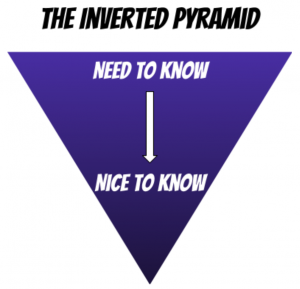If you want to do SEO well, you’re going to have to learn to make better quality content.
As a freelance SEO consultant, I find this to be one of the most frustrating things about SEO. The fact is: content quality is very difficult to measure. You can’t just say “make quality content” and assume content creators know what you mean.
That’s why I developed a checklist you can use to see how your written content stacks up. Read on to learn how and why this works. Or, you can skip right to the checklist.
Why is content quality so hard to measure?
Because content quality is subjective.
With keywords, you can make decisions based on data. Like monthly search volume or estimated difficulty.
With technical optimizations, there are clear best practices you can follow. Is the keyword in the title tag? Is the canonical present and correct? It’s a yes-or-no thing.
For backlinks, we have domain and URL metrics. Or you can just count how many links you gained. Or check that the anchor text fits a profile similar to your competitors. These things are all relatively easy to measure with the right tools.
But content quality is almost totally subjective. Your reader either gets the feeling that your content is high-quality, or they don’t.

And if they don’t get that nice, quality feeling, they’re much more likely to hit the back button and spend time with someone else’s content instead. And that’s bad for SEO.
User engagement is a ranking factor
If people don’t like your content, they’re going to leave and engage with someone else’s content instead. And it will hurt your rankings when Google finds out.
It’s been widely circulated since 2015 through the SEO community that dwell time (the amount of time a user spends on a page) is at least one factor that Google uses to determine content quality.
Not to mention other clues we get straight from the horse’s mouth:
“we use aggregated and anonymized interaction data to assess whether search results are relevant…”
“Aggregated feedback from our Search quality evaluation process is used to further refine how our systems discern the quality of information.”
– Google’s How Search algorithms work page
Think about it. If user engagement wasn’t a ranking factor, then we’d see very well optimized but poorly-formatted walls of text with lots of backlinks ranking well on SERPs.
But we never see that.
Because user engagement is key to ranking well in the long term.
Better content quality = better user engagement
This is just common sense.
Have you ever walked into a business that looked good from the outside, only to turn right around and leave because you’re turned off by the vibe?
Or tried on a pair of jeans only to be put off by the fact that the fit wasn’t quite right?
You’ve probably done the same thing with search results. How many times have you clicked on a link that looked good, only to hit the back button and try something else? You didn’t have to read the whole page to know it wasn’t what you were looking for, you just needed to take a quick scan.
That’s exactly what every visitor to your site does when they land on your content.
That’s why you have to make sure your content passes the 5-second test. Within 5 seconds, the user should have a good sense of whether or not a piece of content is going to meet their needs.
Here’s how to do it.
Content Quality Checklist:
1. First impressions matter
Lead with useful information, otherwise those readers you worked so hard to get to your site are going to hit the back button and click on another search result.

Use the inverted pyramid approach to make sure you’re writing content that gives the people what they came for, then gives them the option to read more for detail and nuance.
2. Be interesting
Think of your content like a presentation.
If the speaker doesn’t grab your attention early on, you’re probably going to pull out your phone instead of listening to the rest.
If your content starts with a paragraph that begins with something like “in our increasingly digital world…” you’re probably boring people and losing visitors.
3. Use images and other visuals to deliver a textbook experience
If you crack open a textbook, you’ll see immediately that you’re reading something with production value. Before you read a single word, you’ll notice photos, illustrations, charts, graphs, call-outs, and professionally-formatted text that all tells you this content is authoritative.
Content producers should aim to do the same thing with web content. Use images and other visuals to help users tell at first glance whether or not your content is high-quality.
4. Break up your content
This might come as a surprise, but no one is going to “read” your content. They will scan it, looking for the information they need. Here’s how to take advantage of that:
- Break up paragraphs into 2-3 sentences.
- Use headings liberally.
- Use lists to break out key items.
- Include images where possible.
Make things super easy to scan, and you’ll be rewarded with better user engagement.
5. Simplify your layouts
Home and B2B Product pages are particularly vulnerable to overcomplicated layouts. All too often, the marketing team has gotten used to adding “just one more section” to a page, and it can result in crazy Frankenstein layouts.
Give your readers a break and use layouts that are easy to understand. Alternating left-right image-text layouts (aka “zigzag” formats) are a particularly good way to break things up while keeping content user-friendly.
6. Deliver a great mobile experience
People consume information differently on cell phones and tablets, which naturally lend themselves to scrolling. Don’t be afraid to find a unique way of delivering a unique, engaging experience to mobile users
The Morning Brew team are the kings of this. They use teasers, open loops, and other techniques to keep users scrolling through their daily email. And it works wonders.
7. Be smart about internal links
Most SEO people know that internal linking is a powerful ranking signal, but it’s also a useful technique for keeping people engaged with your content. You’ve probably clicked on a “recommended for you” or “more like this” type link before yourself, not to mention inline links like the one earlier in this paragraph.
Use suggested content and inline links to keep users well-engaged with your content, and give those pages you’re linking to a boost as well.
Content Quality: Wrapping Up
As more and more businesses double-down on content creation and SEO as a growth channel, the page 1 competition for many keywords is going to get fierce. By honing your ability to produce quality content, you’ll produce a defensible portfolio of content pieces that stand the test of time.

I run a small SEO consulting business in San Francisco, CA. I like to write a little bit and get in arguments with my friends. It’s the only way I can make sense of the world.
